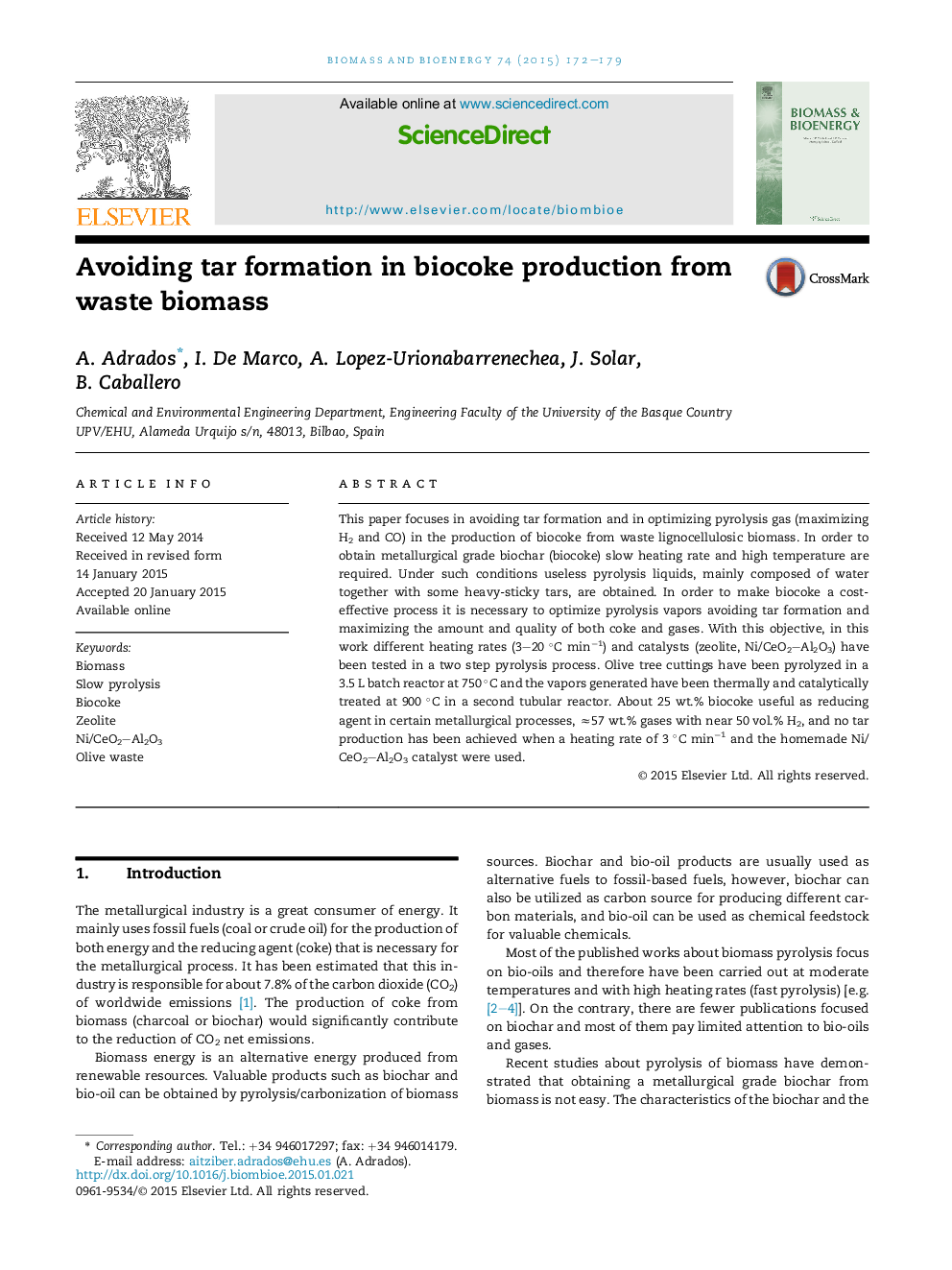| Article ID | Journal | Published Year | Pages | File Type |
|---|---|---|---|---|
| 7063989 | Biomass and Bioenergy | 2015 | 8 Pages |
Abstract
This paper focuses in avoiding tar formation and in optimizing pyrolysis gas (maximizing H2 and CO) in the production of biocoke from waste lignocellulosic biomass. In order to obtain metallurgical grade biochar (biocoke) slow heating rate and high temperature are required. Under such conditions useless pyrolysis liquids, mainly composed of water together with some heavy-sticky tars, are obtained. In order to make biocoke a cost-effective process it is necessary to optimize pyrolysis vapors avoiding tar formation and maximizing the amount and quality of both coke and gases. With this objective, in this work different heating rates (3-20 °C minâ1) and catalysts (zeolite, Ni/CeO2-Al2O3) have been tested in a two step pyrolysis process. Olive tree cuttings have been pyrolyzed in a 3.5 L batch reactor at 750 °C and the vapors generated have been thermally and catalytically treated at 900 °C in a second tubular reactor. About 25 wt.% biocoke useful as reducing agent in certain metallurgical processes, â57 wt.% gases with near 50 vol.% H2, and no tar production has been achieved when a heating rate of 3 °C minâ1 and the homemade Ni/CeO2-Al2O3 catalyst were used.
Related Topics
Physical Sciences and Engineering
Chemical Engineering
Process Chemistry and Technology
Authors
A. Adrados, I. De Marco, A. Lopez-Urionabarrenechea, J. Solar, B. Caballero,
